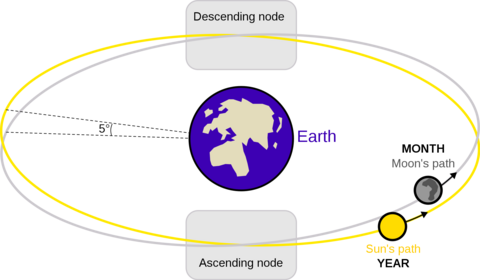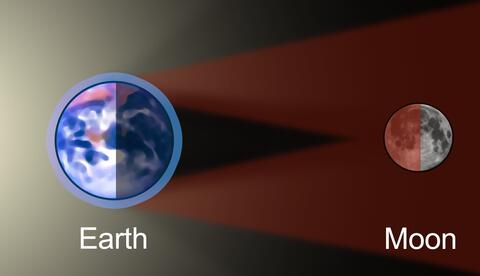The Astronomical Event of 2021: The Super Flower Blood Moon
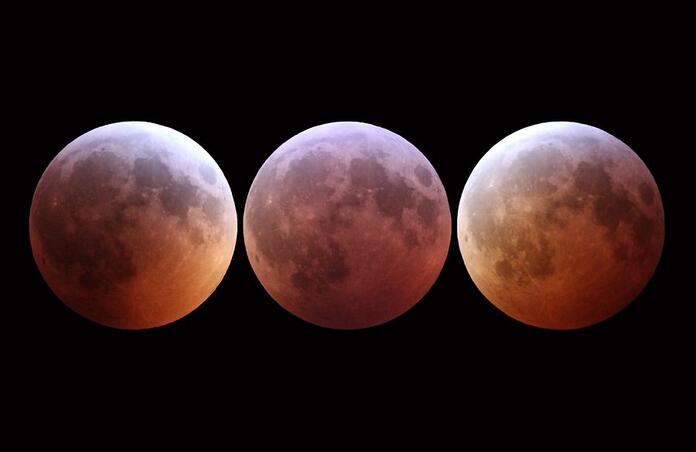
On the 26th May, a wonderful lunar eclipse will be visible from the USA, countries in the Pacific and South-East Asia.
Lunar eclipses occur when the Sun, Earth and Moon are aligned, an occurrence which has been named syzygy. Specifically, the eclipse occurs when the Moon enters the Earth’s shadow. The Moon passes “behind” the Earth (from the Sun’s perspective) each month, when we observe a Full Moon, but we observe an eclipse only when the Moon is also near a so-called orbital node. Nodes are the two points at which the Moon’s orbit around the Earth intersects with the Earth’s orbit around the Sun; the Moon’s orbital plane is indeed tilted at an angle of 5° with respect to the Earth’s, which means syzygy isn’t achieved each month. The term “Blood Moon” refers to a phenomenon we’ve already encountered – the fact that the Earth’s atmosphere scatters light at certain wavelengths more than at others, so that the Earth’s darkest shadow, or umbra, has a red “fringe”.
What is so exciting about the Blood Moon on the 26th May is that the eclipse occurs when the Full Moon is at its closest approach to Earth, its perigee. In fact, this Full Moon will be the largest of 2021. This “Supermoon” has been referred to the “Super Flower Moon”, indicating the full Moon of May. In various cultures, the Full Moon of each month has been associated with a natural phenomenon, for instance the appellation Flower Moon comes from the Native American tradition.
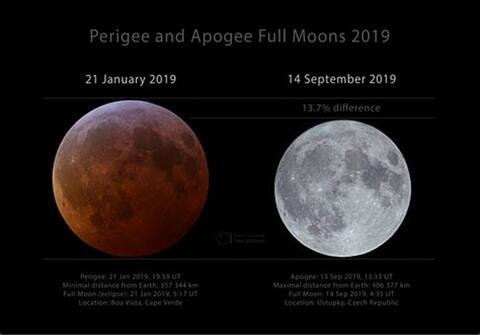
Difference in size between the 2019 Supermoon and a Minimoon
Lunar eclipses are visible for much longer than solar eclipses (when the Moon passes in front of the Sun, casting a shadow on a narrow region on Earth), typically lasting for about 5 hours. The 26th May event will be visible from the West coast of America in the early morning to South-East Asia in the evening, meaning the best places to observe the eclipse will be in the Pacific Ocean: New Zealand, Hawaii, southwestern Alaska … It will be the first total lunar eclipse visible in America since the January 2019 one, which you can see as the cover image.
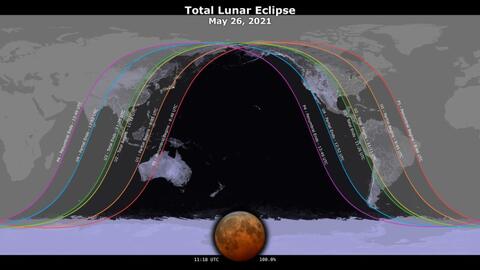
Some cities with observation timing
As you can see in the figure above and the visualization below, there are stages to the lunar eclipse: first, the Moon makes contact with the Earth’s penumbra, the lighter part of the Earth’s shadow, and then reaches the umbra, the innermost part of the shadow. The next stages are the star and end of the total eclipse, i.e. when the whole Moon is within the umbra. The last two phases are the opposite of the first two, the Moon progressively exits the umbra and then the penumbra. It is straightforward to visualize that a spherical object’s umbra is cone-shaped, and the Earth’s umbral cone is about 1.4 million km long – more than enough to cover the whole Moon, which is 384 thousand km away.
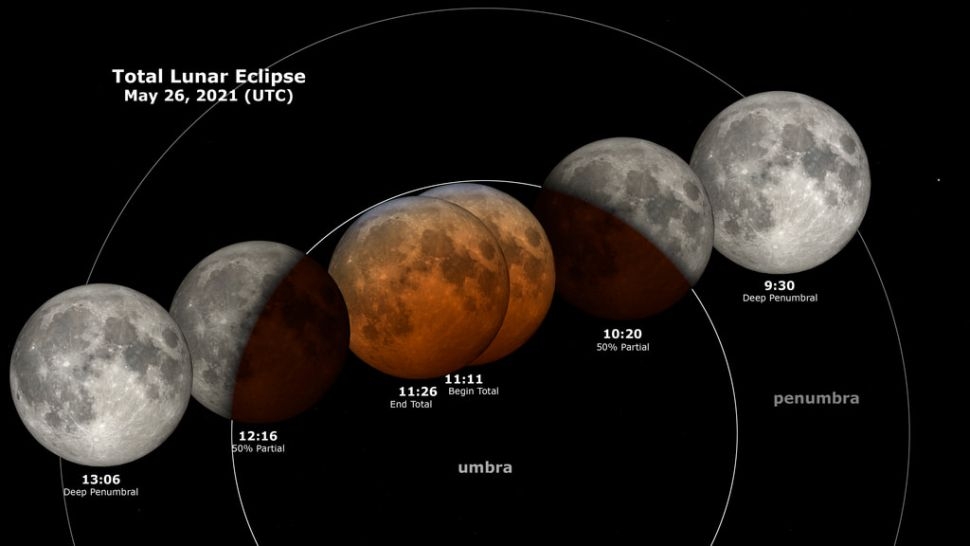
Now that you’re familiar with the astronomical concepts used to describe a lunar eclipse and if you live in a region where the 26th May’s Super Flower Moon will be visible, make sure to look up at the sky! It will of course be broadcasted live on various platforms, including time-and-date.
Cover image: 2019 eclipse over Boston, start of totality, at 11:41 p.m. EST on Jan. 20; the middle of totality, at 12:12 a.m. on Jan. 21; and the end of totality at 12:44 a.m; I. Joson and E. Aguirre
Image Credits:
1 - Nodes, E. Boutet for Wikimedia Commons
2 - Scattering, M. McRae for ScienceAlert
3 - 2019 Full Moons, P. Horálek
4 - Full Moon Names, adapted from P. Sue
5 - Contact times on eclipse map, NASA's Scientific Visualization Studio
6 - Table of observation times, J.Emspak based on timeanddate data
7 -26th May eclipse, NASA's Scientific Visualization Studio

